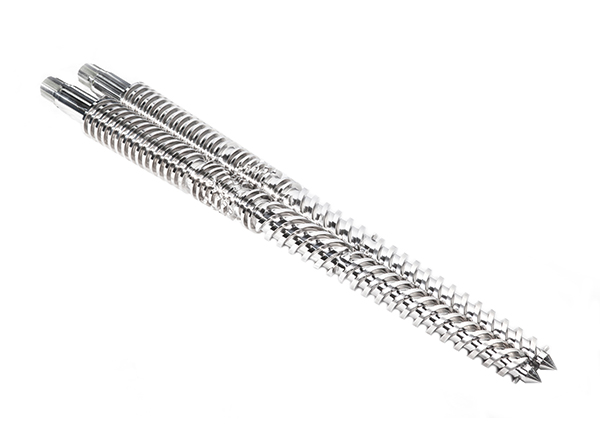+86-0580-8052088
+86-13505800981
No. 20, Liguan Road, Jintang Town, Dinghai District, Zhoushan, Zhejiang, China
There are 5 main points in the detailed explanation of […]
There are 5 main points in the detailed explanation of screw wear, as follows:
1. Each kind of plastic has a desired plasticizing temperature scale. The barrel processing temperature should be controlled to make it close to this temperature scale. Granular plastics from the hopper into the barrel, will first arrive at the feeding section, in the feeding section will inevitably show dry friction, when these plastics lack of heat, melting uneven, it is easy to form the barrel wall and screw surface wear increased. In the same way, in the contraction section and homogenization section, if the melting state of the plastic is disorderly and unevenly, the wear will increase.
2. The speed should be adjusted properly. Because some plastics are fortified, such as fiberglass, minerals or other fillers. The friction force of these substances on metal raw materials is often much greater than that of molten plastics. In the injection molding of these plastics, if the high rotational speed is used, the improvement of the shearing force on the plastics will also lead to the corresponding reinforcement of more torn fibers. The torn fibers contain sharp ends, which greatly increase the wear force. The scraping effect of inorganic minerals on metal surface is not small. Therefore, the speed should not be adjusted too high.
3. As the screw rolls in the barrel, the material conflicts with the two, so that the working surface of the screw and barrel is gradually worn: the diameter of the screw is gradually reduced, and the diameter of the inner hole of the barrel is gradually increased. In this way, the cooperation diameter gap between screw and barrel increases with the gradual wear of the two. However, because the resistance of the head and splitter plate in front of the barrel is not changed, the leakage flow of the extruded material is added, that is, the flow rate of the material from the diameter gap to the feeding direction is added. As a result, the production of plastic machinery decreased. This phenomenon causes the material to stay in the barrel for a long time to add, forming material differentiation. In the case of polyethylene, the hydrogen chloride gas produced by differentiation strengthens the corrosion of screw and barrel.
4. Materials such as calcium carbonate and glass fiber can accelerate the wear of screw and barrel.
5. Because the material is not plasticized evenly, or there are metal foreign matters mixed into the guess, the screw rolling torque force is suddenly added, which exceeds the strength limit of the screw, and the screw is broken. This is a kind of unconventional damage.
https://www.txscrew.com/

Copyright:Zhoushan Tianxiang Screw Factory
China Conical Twin Screws ManufacturersTechnical Support: HWAQ